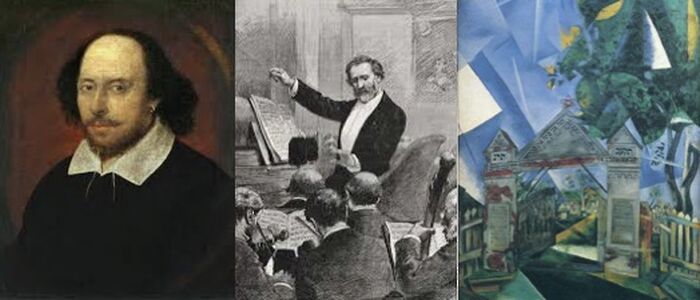The beauty of the graveyard
In his column this week, Joseph Krol examines the unexpected beauty of the graveyard and the presentation of death in realist art
There is an unexpected beauty in a graveyard. Ascension Parish Burial Ground, set up in 1857, is twenty minutes’ walk from the centre of Cambridge, and is perhaps one of the most quietly beautiful places I have ever visited. It is a largely unknown island of peace in the midst of what can be a very stressful city. Among the calm, below the slowly-swaying trees, everyday worries seem to fade into insignificance.
A remarkable variety of people are memorialised within this acre; it is a real cross-section of Cambridge society from the Victorian era through to the present day. Commemorating the poet Frances Cornford, for instance, there stands, in its subtle perfection, an impossibly elegant stone carved by the sculptor Eric Gill. Among the notable scientists buried here is John Couch Adams, the discoverer of Neptune, and philosophers Elizabeth Anscombe and G. E. Moore are also interred on the site, as well as anthropologist James Frazer, and the deeply influential economist Alfred Marshall.

Funerals, burials, cemeteries: they have all entranced artists down the ages, not least during the nineteenth century. They have played an important role as a sort of bridge, as well: being quiet, restful, but ultimately evocative of death, they often straddle the romantic and the real.
“Funerals, burials, cemeteries ... they often straddle the romantic and the real”
Gustave Courbet’s A Burial at Ornans displays this perfectly. It is a colossal painting, some three metres by six, and was deliberately intended to imitate, even to mock, the idea of the grand history painting. There are no overwrought expressions of grief, and the faces of the mourners are all quite ordinary, even ugly. Free from the shackles of illusory conformity and tied anew to the world around the artist, the painting was the birth of realism, and, as Courbet put it, “the burial of romanticism”.
The new style of realism took time to catch on, but eventually it did; tired of the pastoral reveries of the past decades, the public were ready to turn a critical eye to the harsh objectivity that surrounded them. Other artists soon followed suit. Jean-Francois Millet, a member of the Barbizon school, began to depict rural life beyond the stereotypes of romantic landscapes. His paintings, which often centre on the travails of poor farm workers, have a much more sombre tone.
In 1849, he was apparently inspired by Courbet’s work to paint a burial of his own, but very much in his personal style. Rather than a host of gurning relatives, The Angelus originally depicted two plainly-dressed farm workers standing over their child’s tiny coffin. Rather than the mourning of a long life well-lived, Millet first tried to make us consider the utter despair these parents must have felt.
But something made him hang back. As if he did not feel quite ready to force such misery on the world, late in the painting process he overlaid the coffin with a simple peasant basket, leaving the figures at deep prayer about nothing in particular, still isolated in a desolate landscape. The final work, titled The Angelus, was not again recognised for its true subject until Salvador Dali, who had always found the work somehow disconcerting, encouraged the Louvre to X-ray the work. Quite clearly, the little coffin was still hiding behind. This apparent reticence certainly makes one wonder: perhaps he thought there was no art in hopelessness.
The headstones at Ascension are hardly among these sumptuous artworks. The general atmosphere of the churchyard is one of studied neglect; everywhere the lettering is eroded, the paths are imperceptible, and the trees grow with an unkempt portentousness. There is a certain melancholy in the fact that all these graves, however brilliant were those who lay beneath them, are now largely unremembered. But we must note that these people themselves are hardly forgotten. Their true memorials are not wrought from stone. They are the well-thumbed books on library shelves, and the undergraduates who learn of their ideas. If we seek remembrance, it must come from our actions.
This is, I think, why graveyards have provided such a compelling subject for art of all kinds, from Gray’s Elegy through to the works of Courbet and Millet. They are a perfect opportunity for sober reflection. Romanticism is tempered by realism, yes, but realism is also tempered by romanticism. There is the reminder of our mortality, but along with that comes a drive to achieve what one can while one is here. To the artist, it is enough that immortality may be secured at all

 Arts / Plays and playing truant: Stephen Fry’s Cambridge25 April 2025
Arts / Plays and playing truant: Stephen Fry’s Cambridge25 April 2025 News / Candidates clash over Chancellorship25 April 2025
News / Candidates clash over Chancellorship25 April 2025 Music / The pipes are calling: the life of a Cambridge Organ Scholar25 April 2025
Music / The pipes are calling: the life of a Cambridge Organ Scholar25 April 2025 Comment / Cambridge builds up the housing crisis25 April 2025
Comment / Cambridge builds up the housing crisis25 April 2025 Comment / Pick an exam format and stick to it25 April 2025
Comment / Pick an exam format and stick to it25 April 2025






